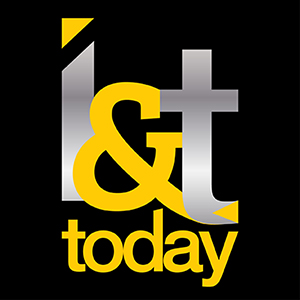By guest authors Yelak Biru and Krishnan Venkata
Data is not an unfamiliar concept in global business and it’s used for many purposes. From hyper-personalized, targeted marketing to real-time financial dashboards, data has become an essential asset for companies of all sizes.
While business leaders often consider how data impacts the bottom line, there is another benefit shaping how businesses engage with their customers, clients and partners: data for good. This notion isn’t new, but it’s becoming increasingly important for organizations that want to make a positive impact on the world.
What Does “Data for the Greater Good” Mean?

At the outset, one could argue that all data is for the greater good. When used efficiently, it improves the health of the organization, creates a highly engaged community of customers, and builds a more efficient work environment. But, organizations that want to use data to advance the greater good need a strategic roadmap to ensure it all comes together. It starts with asking: What, how, and where? When these questions are answered, data becomes a secret superpower, with the ability to create hope in seemingly hopeless situations.
The International Myeloma Foundation (IMF) has made its mission to unify data to build a powerful education program for patients and their families who have received a Myeloma diagnosis or relapse. In partnership with LatentView Analytics, IMF is shortening the time to hope—the period from diagnosis or relapse to a patient’s realization that they can live with myeloma.
Non-profit organizations and foundations with a focus on philanthropy, curious about how their data could create a positive impact, can ask three critical questions to learn how they can use their data to impact the greater good: What, how, and where.
Leveraging Data and Overcoming Challenges—Defining the What.
Organizations such as the IMF must identify what they’re trying to accomplish. For non-profits that may not be as data-savvy, understanding the goal of the effort is crucial for creating a strategic plan with a data foundation.
The main question the IMF is trying to solve is: What do we need to do to reduce the time to hope for our patients? Their ultimate goal is to be able to accurately measure and reduce this time in a repeatable and scalable way.
As IMF made this data journey, they knew their patients and their families needed personalized, educational information that was easily accessible upon diagnosis. With such expediency, patients can immediately utilize educational information to make informed healthcare decisions. Data shows that better-educated patients have more positive outcomes and are more capable of advocating for themselves when using a shared decision-making model.
Non-profit organizations seeking this same goal should remember that their “what” is unique to the community they are building. Unlike influencing a paying customer base, non-profits’ efforts should be focused on how they can be the best advocate for their base. Ranking the community’s most immediate needs can help leaders zero in on where to focus their initiatives.
Starting with a concrete patient-centered goal made it easy to map the road to get there. Organizations that are unclear on their communities’ greatest needs have several low barriers to entry solutions for collecting this information. A brief survey in an email or a poll on social media to a select audience can help project leaders zero in on their focus.
Understanding How
With speed, accuracy and personalization in mind, the next question to ask is how? The International Myeloma Foundation chose to build a knowledge platform that aggregates data to serve as a custom home base for every patient.
Powered by AI and ML, this knowledge platform allows patients to find the information they need to make an informed medical decision—without adding undue stress. Patients can ask questions like what they should be reading and watching, the questions they should be asking their doctors, and several treatment options they can consider.
The platform shows patients a hypothetical six-month journey based on their unique data and acts as a digital touch point to help them navigate their journey more informed. IMF found that patients that follow this journey may have improved outcomes over time.
Similarly, other humanitarian organizations are using aggregated data to improve social outcomes. The United Nations, through its Global Pulse initiative, is using real-time data from different sources to estimate the likelihood of different humanitarian scenarios and help localities better prepare to serve their communities.
As organizations consider creating similar digital interfaces, it is important to consider that every tool—particularly in health care and life sciences—needs privacy compliance and patients’ rights baked in.
Those that don’t know where to start should lean on external partners and consulting for support with data analytics, AI/ML modeling, software/app development, and design.
Last But Not Least…Where?
Finally, once the organization has a clear goal and a plan for execution, the last critical step is to understand where the data insights will be manifested and how many variations of the data should be made available. Forward-facing platforms that are easy for patients to use and interact with are essential for success. For IMF, its comprehensive dashboard is designed to help patients access their information through HIPAA-compliant voice assistance, chatbots, and QR codes.
As the IMF developed its dashboard, it recognized that not every patient has the same physical abilities. Voice assistance allows patients to get the information they need verbally, while chatbots give clear answers to specific patient questions and provide recommendations based on the history of questions or similar questions. QR codes are used to concisely communicate information with families when necessary. Where an organization hosts its data will be unique to the needs of the community it serves.
When discussing where the data insights should live, organizations should think about meeting their communities where they are. Are they regularly visiting your website? Do they meet regularly with employees in person? Wherever the insights will live, make it intuitive.
Ultimately, utilizing data for the greater good is a journey that requires a strategic roadmap founded on three questions: what, how, and where. The International Myeloma Foundation serves as a blueprint for using data to advance the greater good.
Organizations eager to embark on their own “data for good” journeys should acknowledge that IMF’s Time to Hope project was a multi-year endeavor that required resources and collaboration from across the foundation, including patients, healthcare providers, community, and data partners. Together, they created a unified data platform and ultimate patient resource that is educating patients and their families, fostering hope, and improving outcomes.
Krishnan Venkata is Chief Client Officer at LatentView Analytics and Yelak Biru is President and CEO of the International Myeloma Foundation.










